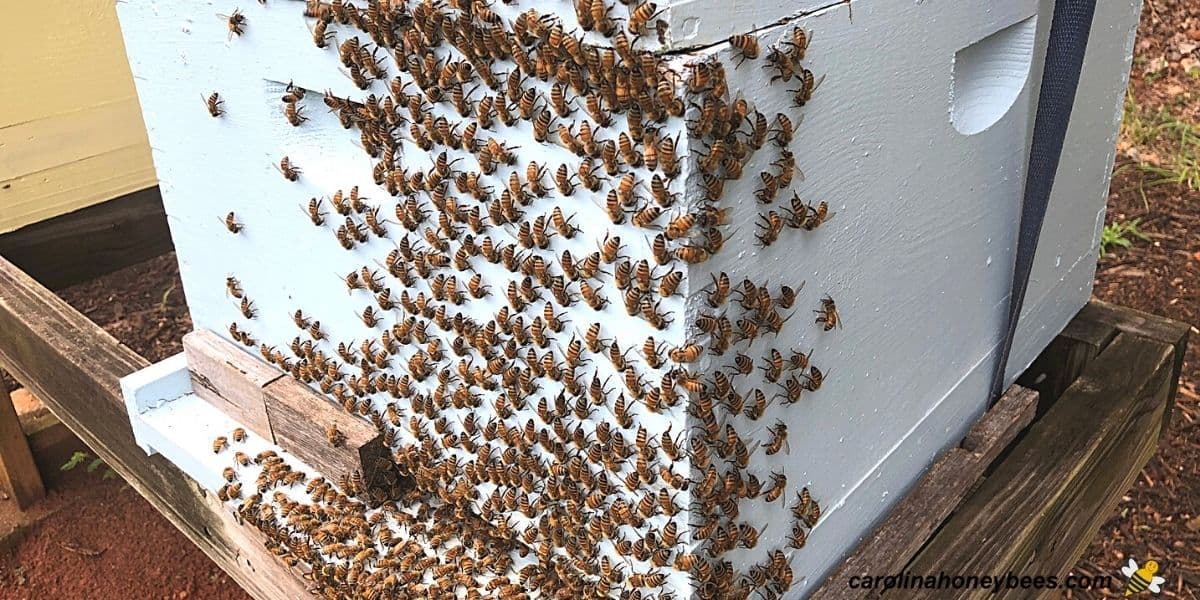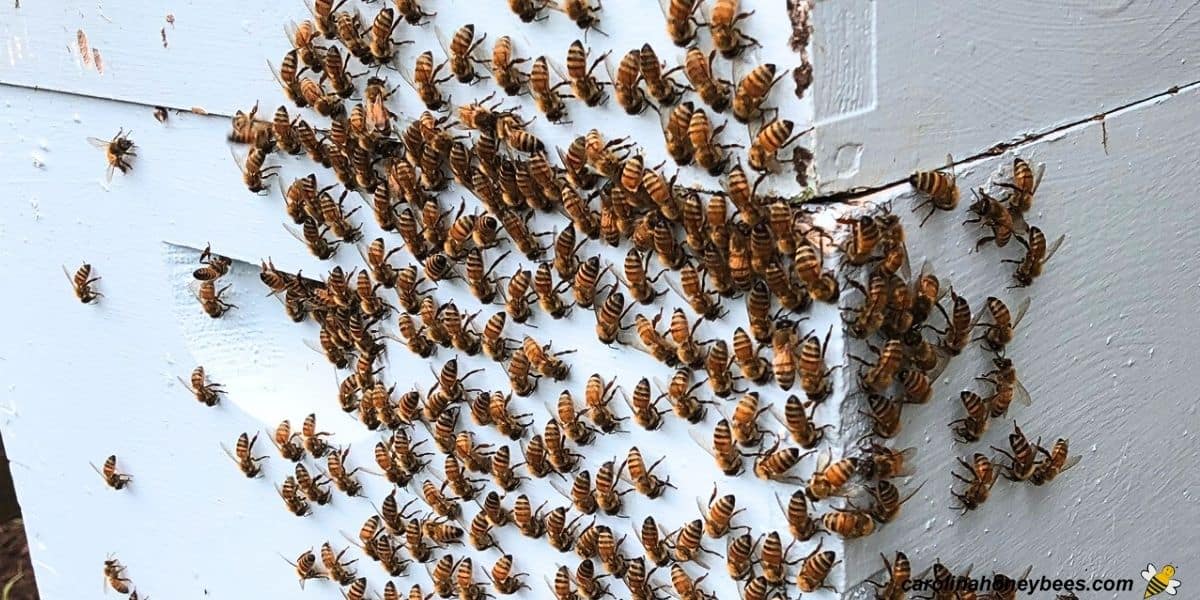Bees Washboarding
Honey bee behavior has been studied by researchers for hundreds of years. But, we still do not understand everything about them. Washboarding bees is an activity that remains a bit of a puzzle to beekeepers. It is observed as an interesting pattern of movement takes place on the front of the hive. In this article, you will learn why it is called “washboarding” and some theories on why it happens.

As a Master Beekeeper, I realize the importance of being observant of happenings in the bee yard. This is basic good hive management. But, I must admit that my bees leave me scratching my head sometimes.
What is Washboarding Behavior in Honey Bees?
Washboarding is a distinctive behavior noticed in honey bees-where the bees rock back and forth in a synchronized manner.
While rocking, they move their front legs as is scraping the hive surface. It happens most often (as far as we know) on the exterior surface of the hive.
I notice my bees washboarding on the face or front side of the hive and the landing board. From a few bees to several hundred, they arrange themselves in rows facing the hive entrance.
Standing on their 2nd and 3rd pairs of legs, their heads and front legs are bent – often facing towards the entrance.
In a rhythmic rocking movement, bees use their front legs to scrape the hive surface- also their mandibles or jaws (serving as bee teeth). They seem very serious about this action and it resembles some type of cleaning activity.
Characteristics of Washboarding
While the exact reason for this behavior remains a mystery, we do find some common characteristics of the activity.
- rhythmic motion – appearing to clean or polish the surface
- it is a bee group activity – it is common to see hundreds of bees washboarding at once
- surface preference – smooth surfaces near the hive entrance are a common choice
- happens most often in warmer months
- washboarding colonies are usually strong healthy hives
- most commonly seen later in the day – from late afternoon on

Theories About Washboarding Bees
We don’t really know why bees perform Washboarding. It is one of those interesting questions about bees with no concrete answer.
But, bee colonies have been doing it for more years than humans can count. The term was applied to this activity long before electric washing machines. (Today, would it be called “maytagging”?)
However, there are some theories that researchers have considered as a possible reason for bees washboarding:
- hive hygiene
- communication/social interaction
- temperature regulation
- developmental purposes
- protection
- genetic
- bees with nothing to do
Cleaning
Perhaps this polishing behavior it exactly what it seems to be. The worker bees could be cleaning the hive exterior. Only workers are involved in this action, no drone bees are participating.
Communication
We know that the honey bee colony is a social organism. Perhaps washboarding is some type of bonding or communication activity. The rhythmic movements as similar to honey bee dances which we know serve as a form of communication.
Temperature Regulation
Okay, this one seems a bit of a stretch to me. But, one theory is that washboard may have something to do with controlling hive temperature. It does happen only during the warmer months.
Also, washboarding bees can occur inside the hive as well – as it has been seen in observation hives. We just don’t notice it inside the hive hidden from view.
Protective Function
Another theory is that this behavior could serve as a deterrent to predators or pests. The continuous movement and possible olfactory (odor) cues may ward off a predator. Possibly, I am a bit reticent to disturb a hive with hundreds of washboarding bees on the front!
Do Bee Genetics Play a Role?
There are several different types of honey bees. As beekeepers, we know that genetic play a role in many aspects of bee life. Maybe some colonies perform this action due to their genetic heritage.
It is common in my bee yard to have several strong colonies – not all of them exhibit washboarding behavior.
Bees with Nothing to Do
Observations confirm that this activity is only seen during the warmer months of the year. It is not likely to occur during a time of abundant nectar or a honey flow.
However, washboarding bees are more common in times of nectar dearth. Is this because we have so many field bees at home with nothing to do? Or is it merely a coincidence?
To date, theories abound. But, no one has declared one specific reason for washboarding behavior in honey bees.

Washboarding vs Bearding
Bee washboarding is a bit different than bees bearding. Of course, it is easy to be confused if you are a new beekeeper.
In bearding, the bees are just hanging together outside the hive on a humid day. Clumps of bees often beard and hang down several inches from the hive entrance.
They are mostly still and not involved in any organized activity – or synchronous movement. If your colony is crowded and a bit more ventilation to your hive many help.
FAQs
The term “washboarding” is used to describe this honey bee behavior because it resembles scrubbing clothes on a washboard.
We do not know why bees washboard. Even the most knowledgeable bee researchers are unsure of the reason behind this unique bee activity.
While washboarding is most commonly observed in honey bees, particularly in Apis mellifera, it is not clear if other bee species exhibit this behavior.
Washboarding is often seen in strong, healthy colonies. However, its presence alone is not a definitive indicator of hive health.
The duration of washboarding sessions can vary. Bees may engage in washboarding for several minutes to a few hours at a time, depending on the conditions and the needs of the colony.
Finally
There is no doubt that the bees washboard for a reason. If only, we could understand-what it is! But then, sometimes we attempt to tell the bees about major events in our lives – do they understand or care? Likely not.
While we may never know why bees perform this “strange to us” behavior. It gives us a deeper appreciation for the complex world of the honey bee.

